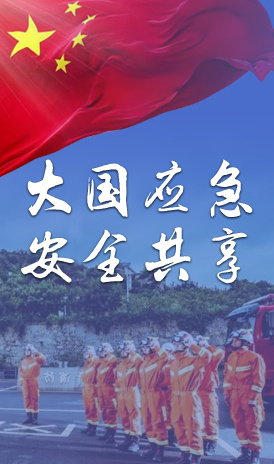
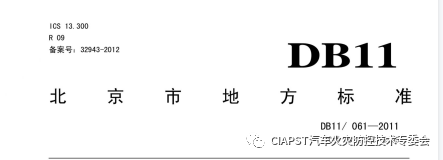
This standard specifies the basic requirements, specific requirements, vehicle appearance markings, other requirements, as well as inspection methods and requirements for dangerous goods road transport vehicles. Applicable to trucks registered within the administrative area of Beijing engaged in road transportation of dangerous goods. The Technical Requirements for Road Transport Vehicles of Dangerous Goods assist local governments in scientifically fulfilling their regulatory functions from a standardization perspective.
DB11/061-2011 4.4 Other requirements emphasize the fire protection requirements, protective devices, and safety technical conditions related to dangerous goods road transport vehicles. Let's learn about them together.
4.4.1 Vehicles should be equipped with no less than two effective fire extinguishers suitable for transporting media. The specifications of the fire extinguishers are shown in Table 3 according to the different loading masses of the vehicles. Fire extinguishers should be installed in fire extinguisher protection boxes, which are located on both sides of the vehicle for easy installation and access.
Table 3 Specification Requirements for Fire Extinguishers
| Loading quality range | Mz<2000kg | 2000kg≤Mz<10000kg | Mz≥10000kg |
| Equipped with fire extinguisher specifications kg | 2 | 4 | 8 |
4.4.2 Vehicles should be equipped with two sets of protective masks and gloves that are compatible with the transportation medium, and placed in a convenient location inside the cab for easy access. Protective masks and gloves should comply with the technical requirements of relevant standards. Vehicles transporting radioactive materials should be equipped with necessary radiation protection equipment and monitoring instruments that have been regularly inspected and qualified in accordance with the law.
4.4.3 Vehicles should be equipped with conductive rubber towing strips, which should comply with the provisions of JT 230, and the contact length between the conductive rubber towing strips and the ground should not be less than 2cm.
4.4.4 Tank trucks should be equipped with grounding wire reels, which should be flexible, easy to pull and retrieve.
4.4.5 For tank trucks, the resistance of conductive components and grounding circuits inside the metal pipeline from any two points or any point to the end of the grounding plug should not exceed 5 Ω.
4.4.6 Tank trucks should be equipped with anti-static loading and unloading hoses, and the resistance value between the two ends of the hose should not exceed 5 Ω.
4.4.7 The electrical components and wire connections of the vehicle should be reliable, effective, and not generate sparks.
Vehicles transporting explosive and flammable dangerous goods should have their exhaust pipes installed at the front of the vehicle and equipped with devices to extinguish sparks. The exhaust spark extinguishers used should comply with the provisions of GB 13365.
4.4.9 The box truck carrying lucky bottles should have good ventilation facilities; The railing of the gas cylinder transport cart should be firm, and the height of the railing should not be less than 3/4 of the height of the upright gas cylinder, and should not be lower than the height of the topmost gas cylinder placed horizontally.
4.4.10 The bottom plate of box trucks and other cargo vehicles should be flat and intact, and appropriate cushioning protection measures should be taken to accommodate the dangerous goods being carried (such as laying wooden boards, plywood, rubber sheets, etc.). The bottom plate of the cargo compartment of vehicles transporting explosives should be covered with flame-retardant and static conductive rubber plates, with a thickness of not less than 5mm. The resistance value between any point of the static conductive rubber plate and the towing zone should be between 104 Ω and 108 Ω.
4.4.11 Vehicles should be equipped with satellite positioning system onboard terminals that meet the technical requirements of JT/T 794 and JT/T 808 for road transport vehicles.
4.4.12 Vehicle protective devices shall meet the following requirements:
a) Vehicles with a total mass greater than 3500 kg should be equipped with side protection devices that comply with GB 11567.1 to prevent personnel from getting involved;
b) Vehicles with a total weight greater than 3500 kg should be equipped with rear lower protective devices that comply with GB 11567.2 regulations;
c) The tank body and its pipelines and accessories should not exceed the side and rear lower protective device of the vehicle. The horizontal distance of the transverse component of the rear lower protective device of the tank truck extending from the rear end of the tank body should not be less than 150mm, and the width should be slightly smaller than the full width of the vehicle, but not less than the outer diameter of the tank body.
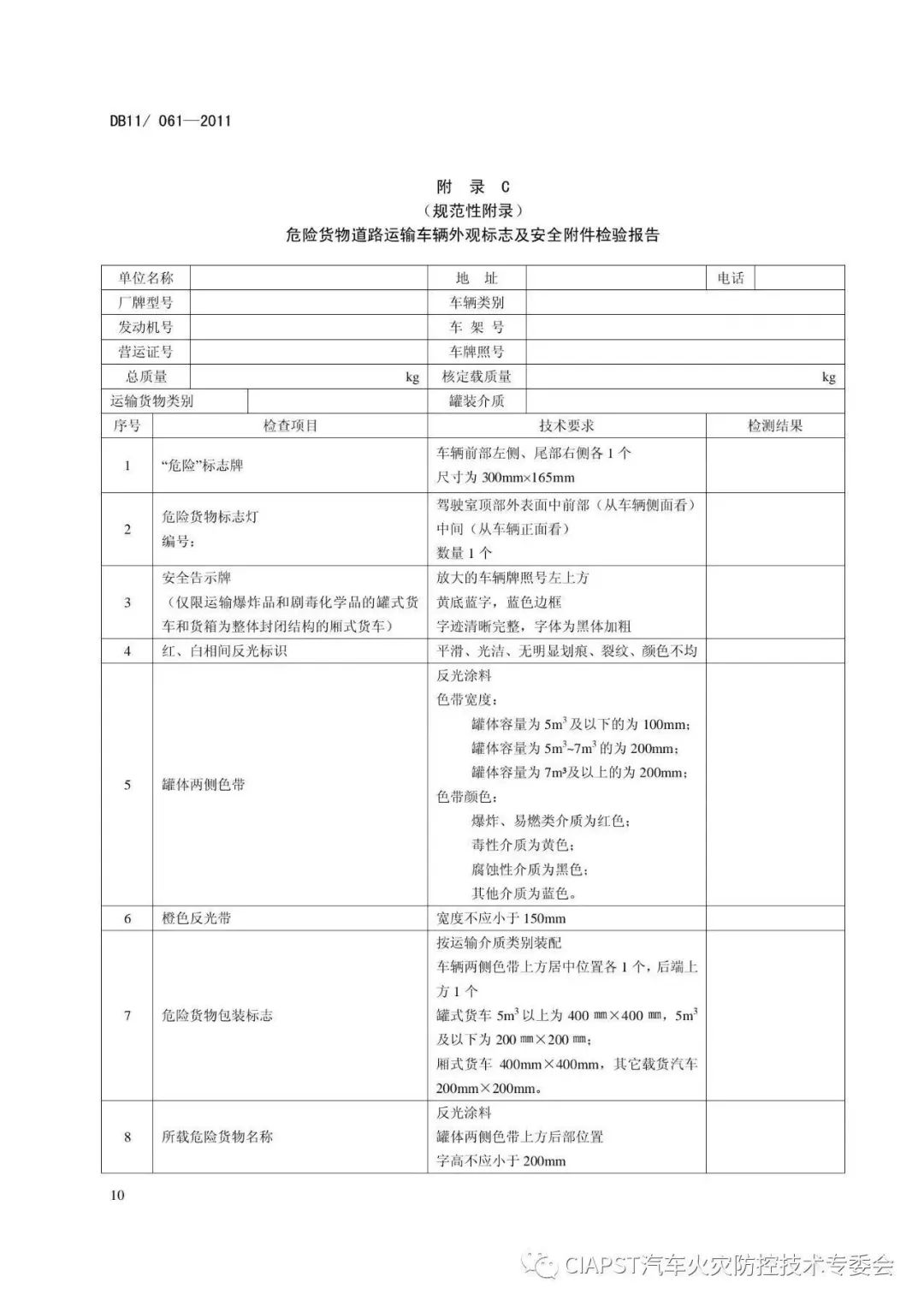
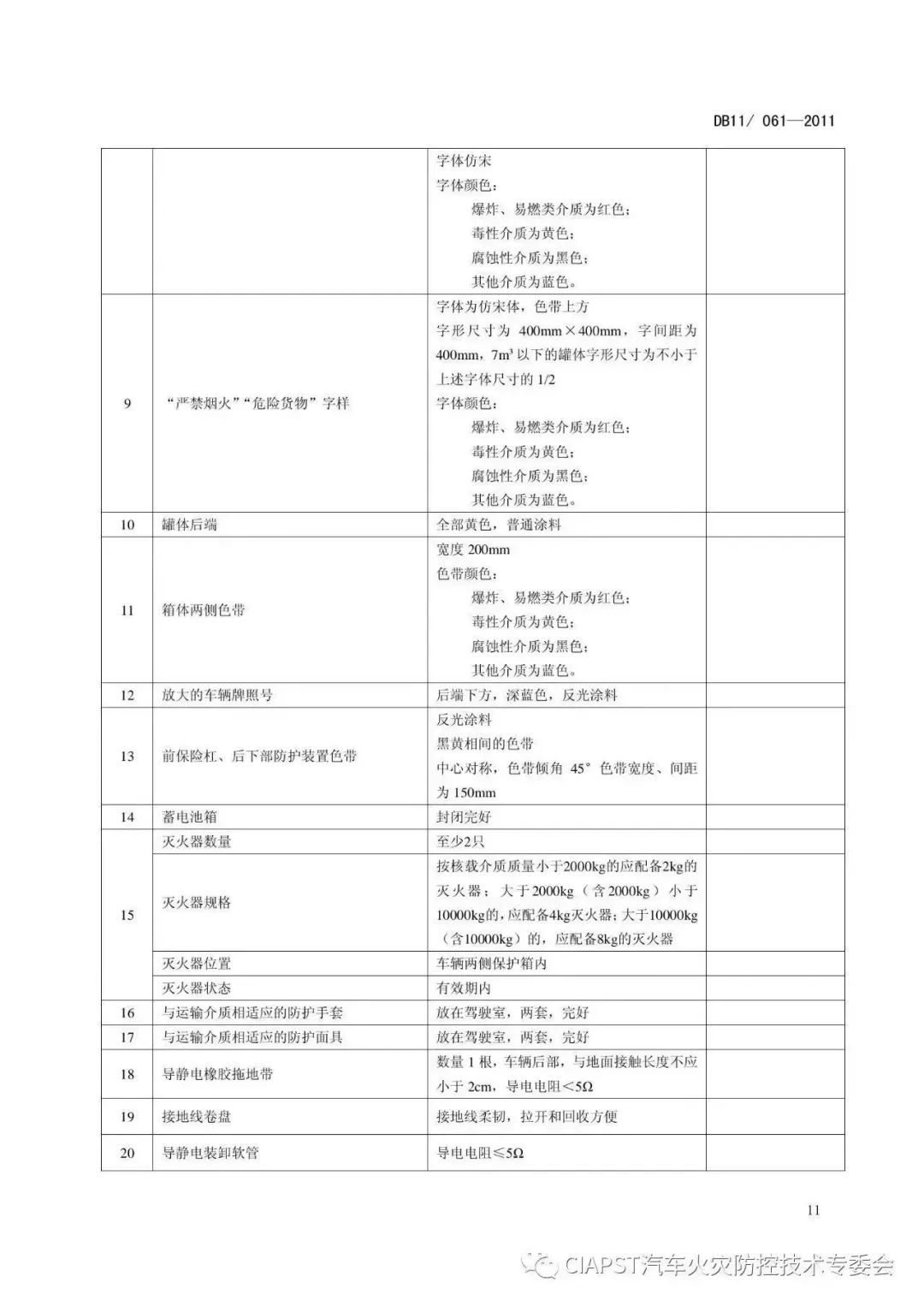
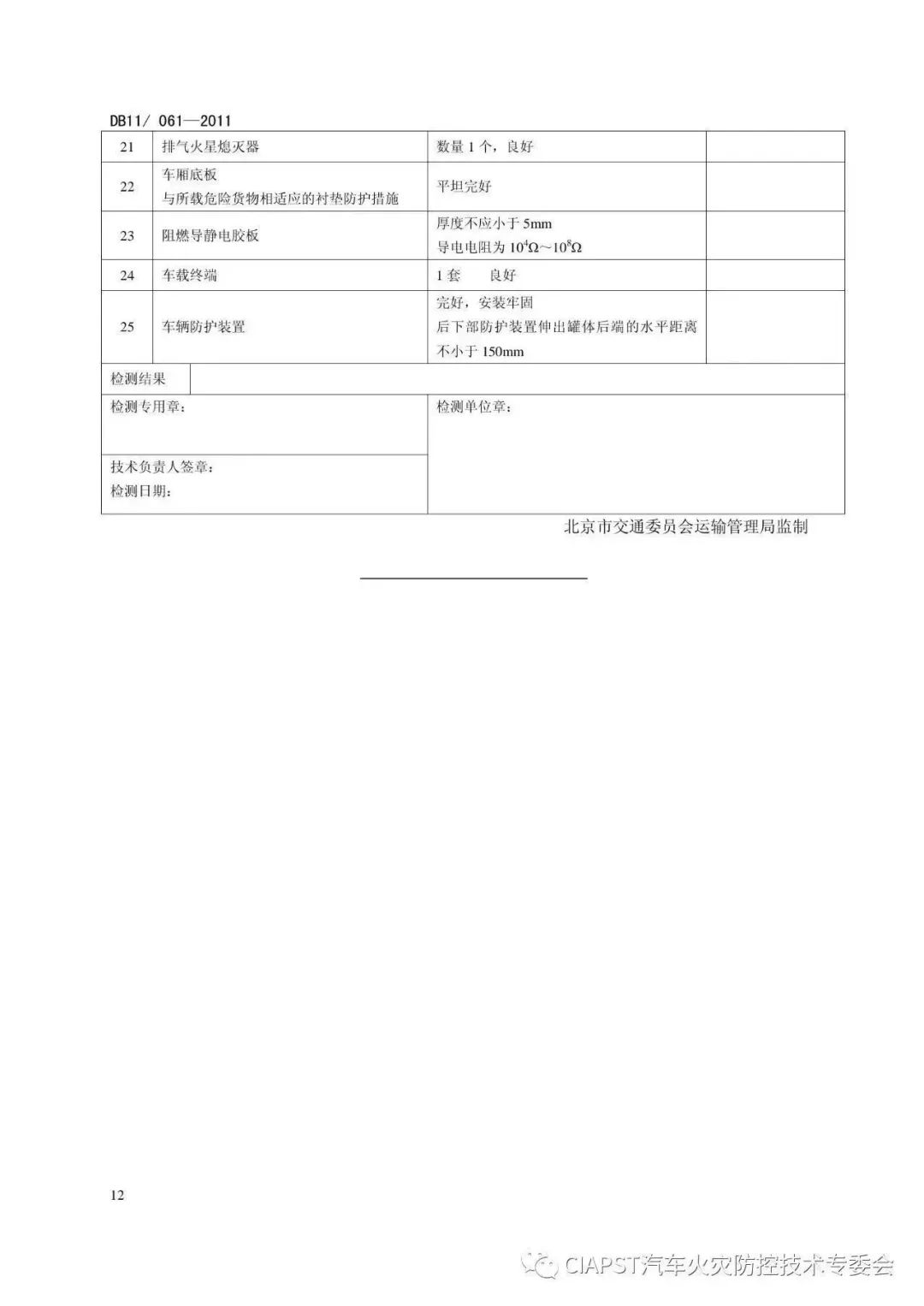
The implementation of DB11/061-2011 "Technical Requirements for Road Transport Vehicles of Dangerous Goods" has played a positive role in regulating the behavior of practitioners, promoting the healthy and stable development of the industry, and promoting new forms of transportation. It helps to promote the successful practice of scientific supervision of road transport vehicles of dangerous goods and improve the precision level of governance.
Reference: DB11/061-2011 Technical Requirements for Road Transport Vehicles of Dangerous Goods.
Please do not reprint or use for any commercial purposes without permission. Violators will be held accountable.